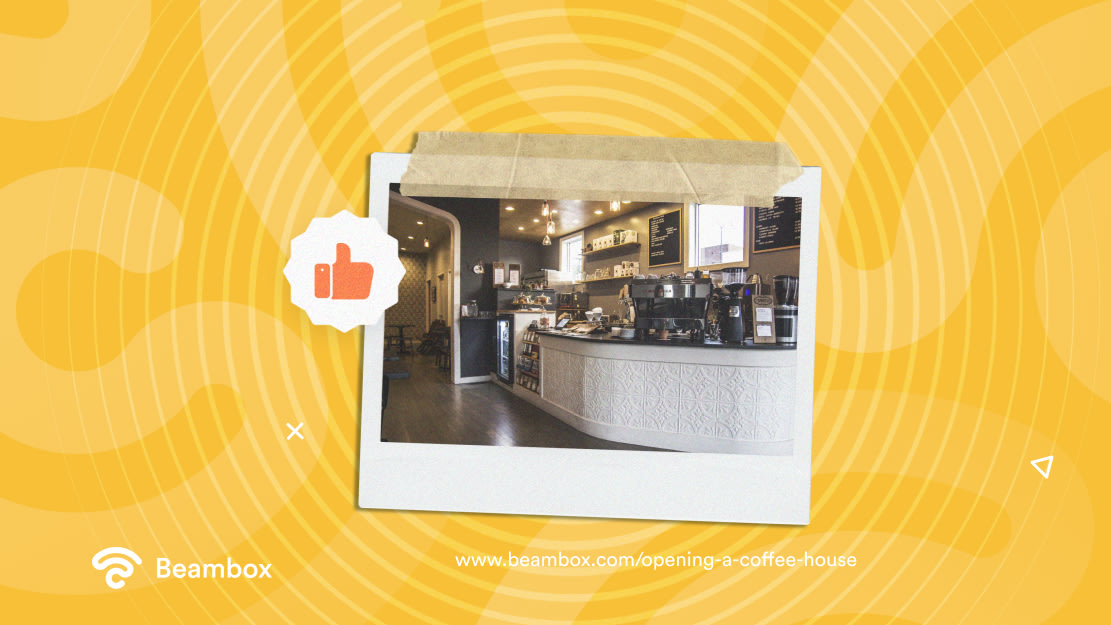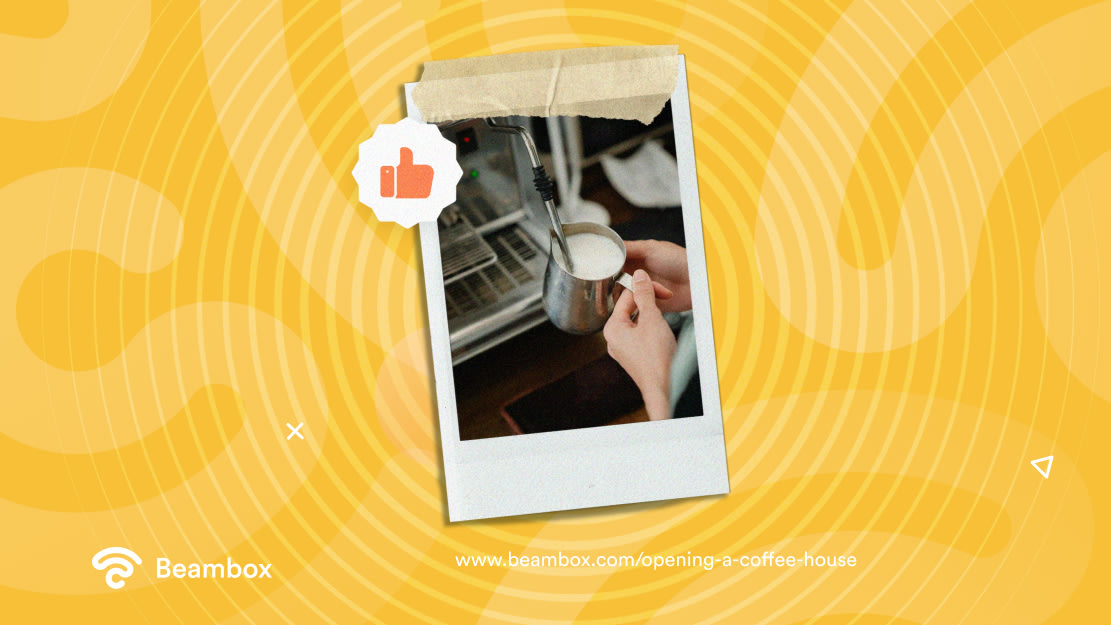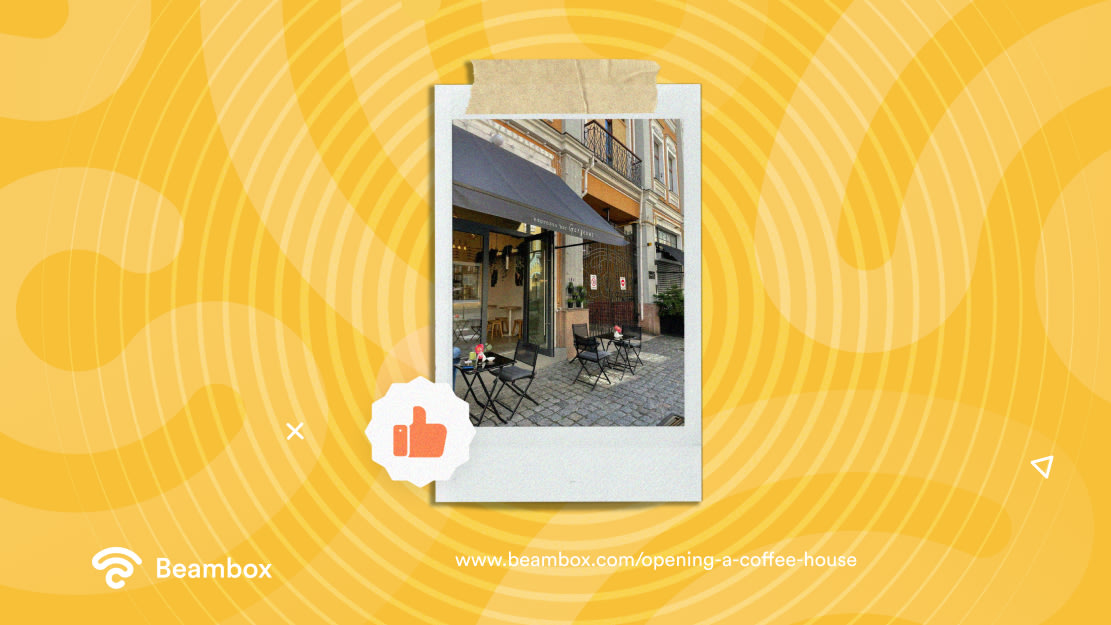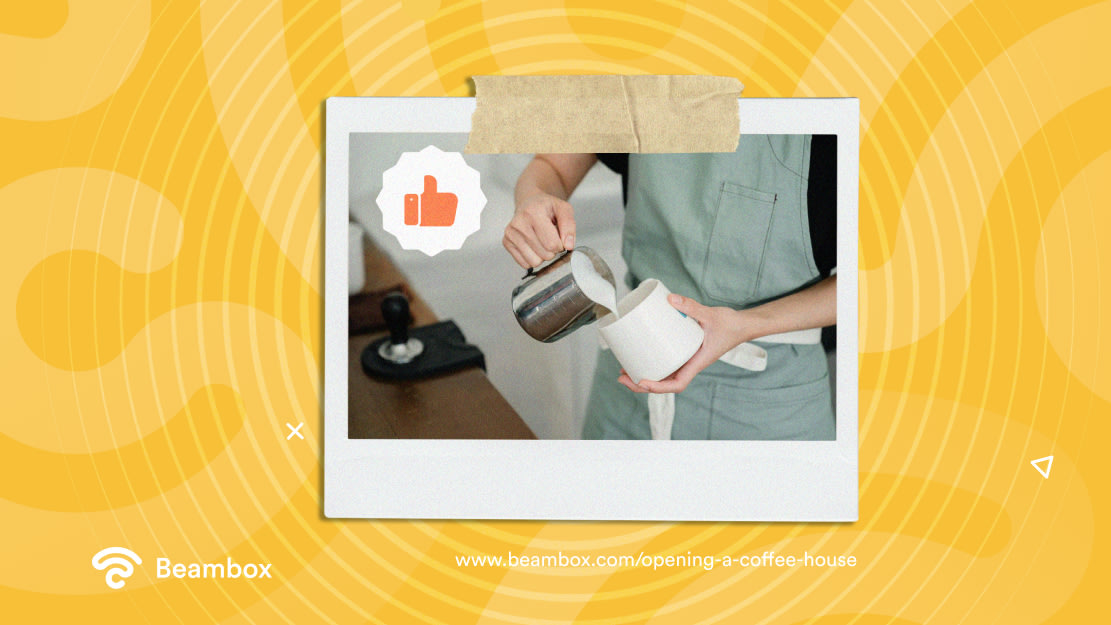Opening a Coffee House: Roadmap To Brewing the Perfect Cup
Nobody can deny that big names like Starbucks and Costa dominate the coffee industry. However, there’s something about a cozy, neighborhood coffee house that has customers yearning for more. They view these coffee shops as a place of connection and conversation instead of a quick caffeine fix. That’s why many entrepreneurs consider opening a coffee house as a viable business.
Besides, with the rising awareness about sustainability, more people prefer supporting local businesses. Therefore, success in this industry lies more in attracting the right audience than being a household name.
Achieving this is simply about following the right steps, securing essentials, and releasing the right marketing campaign. If you’re unsure where to start, this article will serve as a roadmap to these three areas.

How Much Does It Cost To Start a Coffee House?
Starting a coffee shop costs roughly between $20,000 and $400,000. However, this is just an estimate. The answer to the question, “How much does it cost to start a coffee house?” depends on the type you choose.
For example, starting a coffee shop with seating and a drive-through will cost around $80,000 to $400,000. However, a coffee kiosk or a coffee stand requires an investment of $60,000 to $125,000.
Apart from the type of coffee shop business model, various additional factors affect the cost of starting this business. Location is the first of these factors. The primer your location, the more you have to invest.
Another factor is the equipment you buy. More equipment translates to more costs, and the type of equipment you choose also affects the cost. For example, a high-end espresso machine will cost more than a basic one.
Furthermore, many coffee shop owners prefer to train their employees. If you want to do the same, expect the costs to increase further. You must also consider the cost of acquiring licenses and permits when creating your coffee shop’s financial plan.
Research and Planning for a Successful Coffee Shop
A successful business starts with thorough research and planning. Identifying your target market is crucial to this plan. Think about who you want to serve. This will help you develop the correct ways to attract and resonate with your customers.
Let’s say you’re aiming to attract business individuals. They are usually in a hurry when they pick up their morning coffee on their way to work. So, your success will depend on how fast you serve them.
There will also be various tastes among these individuals. Some might like black coffee, while others ask for sweet syrups and confectionery. But you won’t know this without researching your target audience.
Once you know who you want to serve, move on to competitor research. Choose businesses with the same target audience and see how they work. The best approach is to visit them and order something to get a practical demonstration.
Moreover, talk to the other customers there. Learn what they like and dislike about the business and the overall market. Then, replicate your competitors’ efforts while filling the gaps to stand out.
Another aspect of this research is coming up with a concept. This will help you cater to specific needs and preferences, creating a positive customer experience. Therefore, develop a theme and atmosphere your particular audience will like.
But for this, you must research the market and see what people expect. Look at trends like health consciousness and the desire to build a community. Then, use this research to create a concept. Remember, your next steps will depend on this research, so skipping it isn’t an option.
6 Essentials To Secure Before Opening a Coffee House
By this point, you have the initial research ready for use. But that was only the first part of laying the groundwork for a successful coffee shop. The second part is to secure some essentials before opening a coffee house.
Without these essentials, you won’t be able to bring your vision to reality. Everything from equipment and permits to technology creates a welcoming and functional space for brewing and serving coffee. Therefore, the following section will guide you through the preliminary steps of opening a coffee house.

1. Ingredients and Beans
Creating the perfect cup of coffee starts with sourcing the right beans. The origin, roast profile, and freshness of the beans significantly impact the overall taste. Then, there’s the rising demand for ethically sourced beans for sustainable coffee.
Therefore, don’t just buy any blend of coffee beans. Contact a wholesale coffee roaster with a good reputation to get the best price and quality. Alternatively, you can source beans through Direct Trade. This is one of the best ways to make your coffee sustainable. You can also roast your beans, but this would require extra space and budget.
Once you’ve chosen your supplier, move on to other ingredients. After all, not everyone likes black coffee. To create a rich menu, you’ll need other coffee shop supplies.
Additionally, many coffee shops offer baked items with their beverages. If you plan on doing the same, you’ll also need ingredients like flour, butter, eggs, sauces, etc.
2. Furniture and Decor
Even though buying furniture and decor comes after finding the right location, it’s still worth including in this list. Finding the perfect chairs and tables can inspire the overall theme and atmosphere of your coffee house.
Therefore, consider your coffee shop’s concept and buy the furniture accordingly. For example, if you want to attract students, consider purchasing work tables, couches, and comfy bean bag chairs.
Alternatively, attracting business people will require discussion tables, sleek armchairs, marble tabletops, etc. You might also need fans, display shelves, hanging lamps, chandeliers, bulbs, props, artificial plants, and frames.
Once you’ve made the list of furniture and decor you need, start researching sellers. When making the purchase, keep your budget and space in mind.

3. Coffee Shop Equipment
Apart from furniture, you also need to buy equipment. Think about the people you want to serve and what type of menu they’ll appreciate. You don’t have to create a full-fledged menu here. Just get an idea from the market to guide your equipment shopping.
You’ll most likely need an espresso machine, coffee grinder, scales, milk frothers, pitchers, an ice machine, water dispensers, and blenders. Refrigerators, ovens, blenders, mugs, disposable cups, utensils, crockery, and toasters also make it to this list.
Additionally, if you plan on selling confectionery or food items, you’ll need a stove, food processors, stand mixers, etc.
4. Permits and Licenses
You’ll need some permits and licenses to register your coffee shop and make it legal. However, yours might not be the same as your competitors. The documents you need depend on your location, concept, menu, and local government regulations. Therefore, consult a lawyer to determine what you need.
At the very least, you’ll need a state business license, health department permit, food handler’s permit, and reseller’s permit. You might also need building department approval, an LLC or business structure certificate, and a city business license.
5. Technology and Tools
Outdated are the traditional ways of doing business. Changing customer demands call for the use of technology.
So, plan ahead when exploring how to start a coffee house business since this isn’t something you can take lightly.
The software you need might be different from your competitors. However, every coffee business needs a basic cash register and mobile POS system. Those are your first investments in terms of technology.
Then, you’ll need a customer relationship management system, loyalty programs, online ordering, and an inventory management system.
While those are the operational and customer-facing technologies, you also need some for marketing. Reliable coffee shop WiFi is among the most critical aspects of WiFi marketing here. Plus, you can consider digital signage, tabletop ordering systems, touchless menus, and digital menu boards.

6. Funding and Investments
All the essentials you explored above depend on this last one. After all, how will you buy furniture, equipment, ingredients, and tools and gain licenses if you don’t have the money? You’ll also need capital investment to buy or rent the space and pay for signage and marketing materials.
Therefore, you must take steps to secure funding and investments for your coffee shop. If you’ve planned ahead and saved some money, you’re already heading in the right direction.
However, not having any savings doesn’t mean you can’t open a coffee house. You can apply for various business loans, including those from the Small Business Administration.
Moreover, seek out investors and business partners. Having a solid business plan that shows your projected coffee shop ROI will help you convince them. You can even ask your friends and family to help. If that doesn’t work out, contact banks and see how they provide loans. Crowdfunding through GoFundMe and Kickstarter is also an option.
5 Steps to Starting Up a Coffee House
Starting a coffee house isn’t just about getting the right equipment and registering it. It is a step-by-step process that requires thorough planning, strategic decision-making, careful investments, and knowing what your customers need.
In this article, you’ve already learned how to research and plan your coffee business. Plus, you learned about the essentials you need. That means you’ve already covered the first two phases of the process. Now, it’s time to bring it all together. So, follow these five steps and turn your vision into a reality.
1. Create a Coffee Shop Business Plan
The first step is to use the market research and your planning to create an official business plan. The more detailed and convincing you make it, the more investors you’ll attract. Besides, a good business plan helps your employees understand their duties and how their work aligns with their colleagues.
It contains the company’s mission, vision, goals, operational processes, and departmental functions. You also need to add your coffee shop’s concept, target market, competitors, structure details, menu, and income projections to this document. Furthermore, add your marketing plan and branding to this document.
Some business owners even add a SWOT analysis, which includes their strengths, weaknesses, opportunities, and threats. This helps them find a solution if they face a problem in the future.
However, don’t forget the executive summary at the beginning. It summarizes everything the reader will find inside the business plan.

2. Find the Right Location and Design the Interior
Sometimes, a coffee shop’s success relies significantly on its location. If too many similar businesses are in the neighborhood, it might have difficulty standing out. However, if there aren’t any coffee shops in a neighborhood, it might mean there aren’t any coffee shop customers there. Either way, location matters significantly.
Therefore, do proper research before choosing a location. Cafe and restaurant location strategies are equally important despite being slightly different, so keep it specific. Talk to the people of the neighborhood to see what they need.
Remember, the right location will create endless possibilities for you. For example, choosing a place near a park or green area allows for beautiful, relaxed outdoor seating.
3. Develop and Design Your Menu
The next step is to develop and design the menu. Several aspects of opening a coffee house depend on this step. For example, you must know your menu to buy the right coffee bar equipment and ingredients and hire correctly.
So, start by taking help from your coffee shop concept. Will you focus solely on coffee or provide food items as well? Again, visiting competitors and talking to people will help you answer this question.
Once you know what you want to serve, create a list of all the items. Later, you’ll need to clean this list to create understandable categories. Customers don’t like menus that are all over the place.
Next, set prices for the items and design the card. You should also include your branding elements to create a sense of community. Moreover, add appetizing pictures of your menu items and write short descriptions to help the customers choose.

4. Hire and Train Your Staff
Hiring the right people will guarantee the success of your coffee shop. You need passionate staff who make your customers feel at home and proper chefs to create your cafe’s taste.
Therefore, hiring and training your employees is crucial in opening a coffee house. Advertise that you’re hiring on social media, your website, and traditional marketing materials like brochures. Create a proper hiring system and include a practical demonstration.
Once you have shortlisted the candidates, think about how you want to train them. Address everything from coffee basics, including brewing methods, espresso operation, and milk steaming, to customer service etiquette. However, make this training ongoing to include regular updates and ensure consistency.
5. Launch Your Coffee Shop
Once you’ve followed the above steps, you’re ready to launch your coffee shop. Remember, this is your first chance to make a good impression, so make it count. Offer launching day discounts and deals to bring in new customers. You can even offer a special food item and limit it to launch day. This will entice customers to cross the threshold.
Moreover, warmly welcome them and try to create a connection from day one. You also need to spread awareness about your coffee shop.
So, create a launch day campaign for social media and traditional marketing materials. Distribute brochures and pamphlets around the neighborhood. You can even create a mascot for your coffee shop. The goal is to attract as many customers as possible on the first day.
Tips To Market Your Coffee Shop Business
There’s a lot of competition in the cafe and coffee industries, whether it’s convenient coffee chains or cozy local cafes. Owing to that, it isn’t easy to stand out once you’ve launched your business. But with the right marketing strategies, you can make it happen.
Remember, the best promotion you can give your coffee house is exceptional quality and service.
Happy customers mean loyal customers who bring in their friends and family and spread good word about you. Another way to increase this loyalty is by offering redeemable coupons and deals.
Next, create a website with a solid presence on all social media platforms, especially Instagram and TikTok. Do you want to know why? Because that’s where most of your customers are! You can use various social media ideas and coffee shop hashtags to ensure your ads reach the right people.
Moreover, optimize your website for local SEO. That’s the first place customers search when choosing a place to visit.
For your social media and coffee shop marketing campaigns, create a story and culture around your coffee shop. Make people resonate with your mission and forge genuine connections.
Some other marketing options include influencer marketing, event hosting, and partnering with other local businesses.

Is It Profitable To Start a Coffee House Business?
Yes, opening a coffee house can be profitable if you follow the right steps and establish your position in the market. After all, the demand for coffee isn’t going anywhere anytime soon. So, if you can stand apart, you’re good to go. It all starts with research and planning, then moving on to securing the necessary elements.
To stay in business, you must also pay attention to your marketing strategy and add new trends. If you want to automate your marketing initiatives and gather customer data, try Beambox.
This WiFi marketing platform only requires an internet connection. Want to try it out? Start your trial now!
Get Started With Free WiFi Marketing
Beambox helps businesses like yours grow with data capture, marketing automation and reputation management.
Sign up for 30 days free


